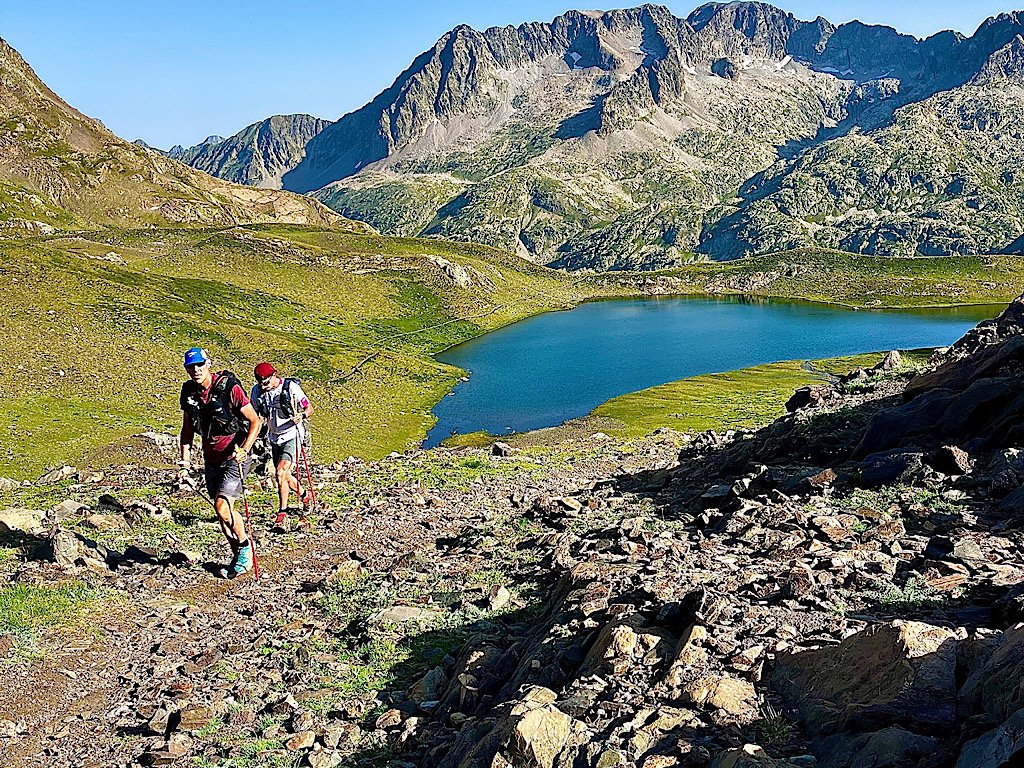Here are our tips to help you choose the perfect sleeping bag for your mountain adventures.
When you venture into the mountains, whether in summer or winter, your sleeping bag becomes your faithful companion. It's your mobile refuge, your warm embrace on cool nights, and your guarantee of restful sleep.
But how do you choose the right sleeping bag for your adventures?
TIP 1: WHERE AM I GOING TO SLEEP AND WHAT ARE THE CONDITIONS?
Before choosing a sleeping bag, it's essential to know the weather conditions at your destination and the time of year you plan to camp. In summer, nights tend to be warmer, while in winter, temperatures can drop considerably. Also, if you'll be spending the night in a tent or shelter, your thermal requirements may vary.
TIP 2: COMFORT TEMPERATURE !
Sleeping bags come with temperature ratings that indicate the temperature range in which they are effective: comfort, borderline, and extreme. COMFORT indicates the temperature at which a standard person* can sleep comfortably.
THE LIMIT represents the minimum temperature at which a standard individual can sleep for several hours in a recumbent position.
EXTREME: Minimum temperature at which a standard woman can remain for 6 hours without risk of death from hypothermia, although frostbite is possible.
Each brand has its own classification and it is important to know if the bag has passed the CE tests according to the standard. EN 13537, because it is not a mandatory rule.
Some brands, especially low-end ones, include a label with comfort, limit, and extreme temperatures, but they haven't passed the tests. The label sewn or engraved on the bag with the temperature range must bear the EN 13537 standard or the CE mark (the original, not one of the many imitations).
It's important to choose a sleeping bag designed for the temperatures you'll be facing. For summer, a sleeping bag with a higher comfort temperature rating may be sufficient, while for winter, you'll need one with a lower rating and lower heat retention capacity.
*Standard man: 25 years old, 1.73m, 73kg
*Standard woman: 25 years old, 1.60m, 60 kg
TIP 3: WEIGHT AND SIZE
If you're planning to go hiking or trekking, the weight and size of your sleeping bag are crucial aspects to consider. Opt for bags that are lightweight and compact, especially if you'll be carrying all your gear with you. However, if you'll be staying in a refuge or at a base camp accessible by vehicle, you can afford a slightly larger and heavier bag.
TIP 4: FEATHER OR FIBER?
The material and type of insulation in your sleeping bag will influence its ability to keep you warm and comfortable.
The down bags They are known for their excellent heat-to-weight ratio, ideal for cold, dry conditions. The drawbacks are their price and poorer performance in wet conditions.
On the other hand, synthetic, fiber bags are more resistant to humidity and can dry more quickly, making them a preferred choice for humid or rainy environments. Their biggest drawback is their weight and lack of compression.
TIP 5: WHAT FORM DO I GET INTO!
Sleeping bags come in different construction styles, such as mummy, rectangular, or semi-rectangular. Mummy-shaped bags offer a better fit to the body, minimizing voids and helping retain heat more efficiently. However, if you prefer more room to move, a rectangular bag may be more suitable for you.
In summary:
Choosing the right sleeping bag for your mountain adventures is crucial to ensuring a comfortable and safe experience. Consider weather conditions, temperature ratings, weight, size, material, insulation type, and bag construction before making your decision. With the right sleeping bag, you'll be ready to face any challenge the mountains throw at you, whether in summer or winter, in a tent or a shelter. It's often necessary to have at least two sleeping bags, one for summer and one for winter, because it's difficult to have one for everything.
But if you want to buy just one, think about the conditions under which you will use it the most.
If you're hot, you'll always have the option to open it, and if it's cold, here are some of my tips!
If you think you're just right... especially in winter
- Add a down jacket, on top of or inside the sleeping bag where you feel the coldest.
- Sleep with long sleeves, thermal type
- Cover your head with a hat or a buff (few people know this, but up to 40% of heat is lost through the head)
- Cover your mouth to avoid breathing very cold air.
- The thermal sleeping bag can add up to 8°C to your sleeping bag.
Get ready to sleep under the stars and enjoy the beauty of nature at its finest!



